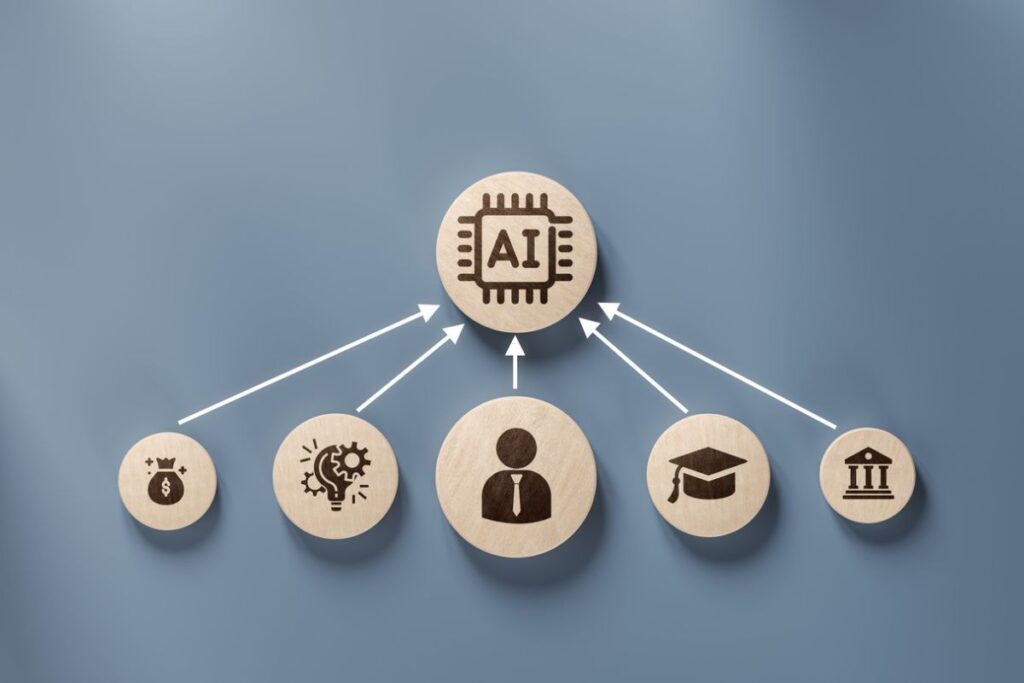Summary: AI is transforming learning and development, but in regulated industries, responsible implementation hinges on careful data choices, strict governance, and robust collaboration between L&D and compliance teams.
Responsible AI Starts with Data
AI has been developing fast, and it looks like it is here to stay. It can be revolutionary when applied correctly but it can also lead to potential ethical and moral issues for organizations in regards to data regulation. Industries like healthcare, finance and insurance need to think through their AI use carefully. They must navigate stringent rules dictating what data is permissible in AI applications. For L&D leaders, this means more than technological advancement—it’s about ethical stewardship. Missteps in handling sensitive data risk hefty penalties and loss of trust.
L&D professionals must meticulously vet AI tools, ensuring compliance with regulatory frameworks and aligning with organizational values. AI should not only advance learning objectives but also respect the privacy and security standards these industries demand. This includes conducting thorough assessments of AI’s data handling to prevent overreach and maintain integrity.
Each data decision is a reflection of an organization’s larger ethical commitment. Success in integrating AI relies on marrying innovation with responsibility, ensuring AI acts as a responsible partner in learning processes.
Governance Is a Shared Commitment
Governance cannot be an afterthought—it’s integral from the very start. Effective governance of AI involves L&D collaborating heavily with compliance, legal, regulatory, and information security experts. These partnerships ensure the AI tools adopted are not only compliant with existing laws but also enhance organizational learning and development safely.
In these discussions, L&D professionals bring critical insights into how learning technologies interact with users and highlight where new AI capabilities may introduce risks. By working closely with other departments, L&D facilitates a unified approach that aligns AI implementation with organizational goals and regulatory requirements.
L&D’s role as a bridge between AI capabilities and compliance requirements underscores its importance in realizing a cohesive governance structure. This partnership encourages not just compliance, but a culture of safety and integrity that extends throughout the organization.
Setting Clear Guardrails for Employees
The use of AI tools requires a shift not just in technology but in behavior. It’s L&D’s responsibility to set and communicate boundaries—what we term “guardrails”—within which employees can safely and effectively use these tools.
Employees require more than just operational training; they need guidance in interpreting AI outputs in ways that align with the company’s strategic objectives. By instilling critical thinking and judgment as foundational skills, L&D leaders empower employees with the confidence to question AI outputs and assess risks accurately.
Encouraging an understanding that AI is adjunct to human insight prevents the compliance pitfalls that come with unchecked dependence. Developing such awareness ensures that employees operate AI tools as informed collaborators, not passive recipients.
The Role of Human Judgment
Despite technological sophistication, AI lacks the organic intuition humans bring. L&D professionals must reinforce the importance of human oversight—understanding that the ultimate responsibility for AI’s impact lies with the people who use it.
Training programs should stress the value of human judgment in correcting potential misconceptions generated by AI. Employees need to actively engage with AI outputs, overlaying their own expertise and knowledge to derive true value.
By prioritizing human oversight, L&D creates an environment where AI enhances decision-making rather than subverts it. This dual enhancement emphasizes a company’s commitment to ethical standards and strategic foresight.
Beyond Compliance: Upholding Organizational Values
For L&D, deploying AI transcends achieving compliance—it’s an opportunity to embody and amplify organizational values. Ethical AI usage can become a cornerstone of a company’s broader responsibility goals, symbolizing commitment to integrity and social responsibility.
AI adoption should reflect an organization’s greater mission—integrating ethical considerations into its core strategy and promoting a culture of continuous improvement. L&D’s role in this journey is pivotal, facilitating progress not just through technology but through shared values and collective ambition.
Organizations that prioritize this alignment position themselves as innovators in their field, using AI not just to meet regulatory needs but to enhance their competitive edge and cultural leadership.
Partnership and Responsibility Drive Success
AI promises efficiency and insight in regulated industries but thrives only through a shared commitment to ethics and governance. Learning teams serve as trusted partners—integral to ensuring ethical and effective AI deployment. Organizations should set strong frameworks, establish sound guardrails, and focus relentlessly on both compliance and enhancing human potential. This commitment to responsibility underpins lasting success in AI-powered learning.

